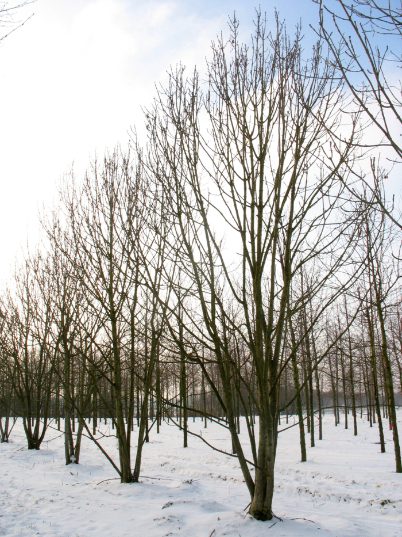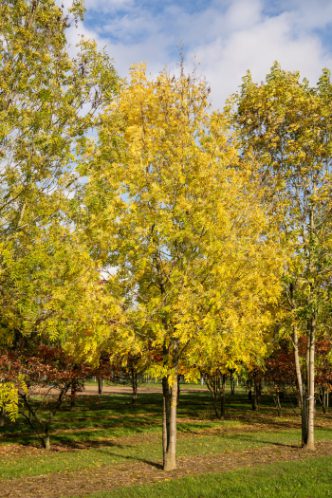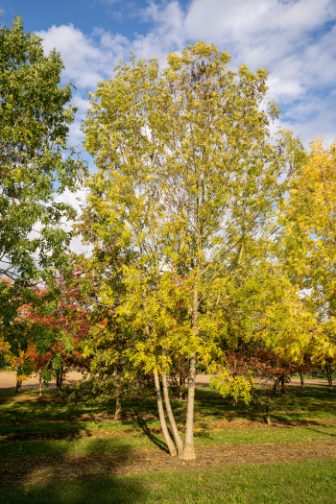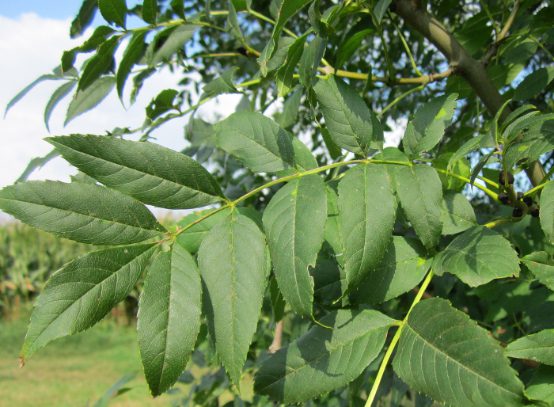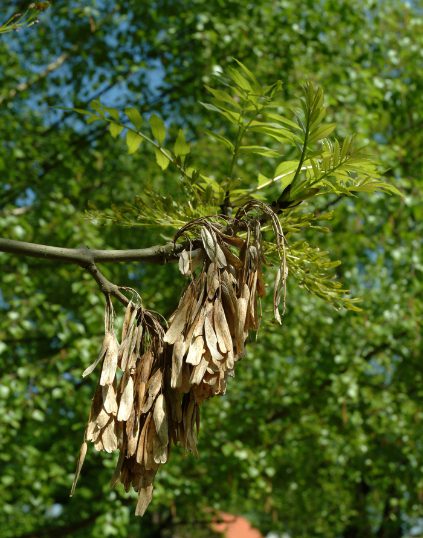Fraxinus excelsior | Common Ash
Fraxinus excelsior is the third most common tree in the UK. Unfortunately, this tree and many other types of Ash may soon disappear from our landscapes because of a highly infectious disease. Caused by the fungus Hymenoscyphus fraxineus, 'Ash dieback' has spread across the country and is expected to kill half of all Ash trees. The disease is first visible at the crown as leaf loss that continues down the tree, bark lesions appear and eventually the whole tree will die. To limit the spread of this disease there is a ban on the transport of any live Ash within the UK. We're therefore unable to supply Ash trees until further notice.
Fraxinus excelsior is a large fast-growing deciduous tree, with a wide oval-to-round crown. It has pale brown-grey bark and smooth twigs with distinctive black, velvety leaf buds. Dark green leaves are pinnately compound with 3-6 opposite pairs of oval leaflets with a single terminal leaflet at the end; an unusual characteristic is that the leaves fall in autumn while they are still green. Purple male and female flowers appear before the leaves in spring, growing in spiked clusters at the tips of the twigs. In late summer to autumn the female flowers develop into conspicuous, winged fruits called 'keys' that are dispersed by birds and mammals. Fraxinus excelsior will thrive in most soil, and can be found growing in: hedgerows, gardens, parklands, woodlands, coastal areas, and can even be seen planted in towns and cities as it is tolerate of air pollution.

Experts predicts that Ash dieback will kill over half of the 150 million ash trees across the country. Ash is a tough hardwood that absorbs shocks without splintering. It's used for making tools and sport handles, including: hammers, axes, spades, hockey sticks and oars. In the 19th century, ash was commonly used to construct carriages, and Britain’s Morgan Motor Company still grows ash to make frames for its cars.

